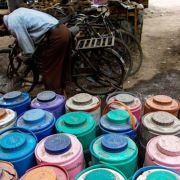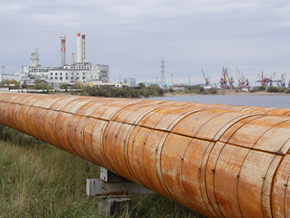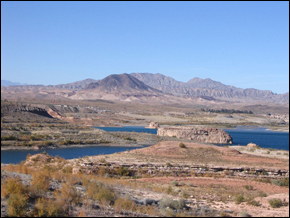Ned Breslin: Lasting Coverage — Retooling the WASH Model’s “Beneficiary” Indicators (Part II)
So if “beneficiaries” are a terrible indicator of success in the international water, sanitation, and hygiene (WASH) sector, as I suggested in my last posting, then what should take their place?
Let me suggest, as a start, the idea of “lasting coverage,” which tackles the difficult issue of continued solutions and ongoing monitoring—a debate that is utterly absent when we just count beneficiaries. (In a later blog, I will discuss the related issue of water-people years.)
For instance, mapping work is currently underway in Rulindo—a district in northern Rwanda with 494 villages and a total population of 264,854—to establish baseline coverage. Early results show that there are many broken water points, and, as a result, actual water coverage could be as low as 30 percent in this region.
This means that the millions of dollars of investment that went to building these water kiosks—abandoned long ago, now bone dry and rotting in the African sun—have been essentially wasted.
These broken water points were financed by external NGOs and development agencies, all of which meant well. All of which counted the number of people helped—the “beneficiaries”—and all of which left Rulindo after the installations were completed and the beneficiaries had been counted. All reported back to their donors, and all then looked to the next region in need of water infrastructure development.
And while that initial number of beneficiaries may have impressed some—and perhaps it even led to further grant monies, which allowed the agencies to finance replications of this work in other villages—today, the number of beneficiaries helped by these projects in Rulindo stands at zero.
Counting beneficiaries may have kept funding flowing to water agencies, but it did not keep water flowing to these villages. In the case of Rulindo, as is the case in countless places around the world, counting beneficiaries did not lead to lasting coverage.
That is because there is an underlying problem with this methodology: the number of beneficiaries is only an indicator at one point in time—how many people were serviced on the day that the work was completed.
But success should not be measured by whether everyone in Rulindo had water on the day that the last water point was constructed there. That is a great day, to be sure, but the project will not truly be successful unless all the people from Rulindo—present and future generations—continue to have flowing water long after the last completed installation.
So, since implementing a functional system that is available to the public is only step one, this means that our focus on lasting coverage must at least start—whether district-wide or at one single village—with the difficult questions surrounding management, financing, poverty, engineering, water resources, and long-term planning. But these core questions are too often masked by a focus on beneficiaries.
We at Water for People are trying to implement a different strategy called the Rulindo Challenge:
- Every household, every school, and every clinic gets access to improved water supplies. Success will only be achieved if these investments last and if the coverage stays at 100 percent long after we’re gone.
No handouts. The Government of Rwanda pays, the people of Rulindo put cash on the table, and we add financing as well—none of us can do this individually, but, collectively, we just might succeed. - Get the finances right. We need to be sure that the tariffs and any additional finances in the district are used to keep water flowing, to support the extension of water systems as communities grow, and to ensure that enough money is available that water systems can eventually be replaced, when required. The goal is that no other water agency will ever need to help Rulindo address their water challenges because we implemented a sustainable system the first time around.
- Bring all our technical support. We need to ensure that systems are built well, managed well, and can be sustained over time. We will support the further strengthening of Rulindo’s already significant available human and technical capacity, building from a foundation that exists rather than assuming that Rulindo has no capacity at all.
- Monitor for a minimum of 10 years. Monitoring should not be designed to boast the successful implementation of a water system, but rather to recognize that the project is only beginning once the hardware is in place. All of the training, design work, and finances may be beautifully conceived, but, in practice, they may not all be executed properly or in sync with one another. Thus, good monitoring allows for strategic additional investments of time and resources, as well as design and technical work, so that the inevitable challenges that emerge are addressed within this dynamic system. If the community is able to step in and solve the problem without the aid of Water For People, then the training and support have worked. If not, we need to analyze what went wrong and what needs to change so that the response to problems leads to water flowing again?
The Rulindo Challenge will be successful if we keep our sights on lasting coverage—which we plan to do, and not only in Rulindo.
Water For People is modeling Everyone initiatives globally: meaning that everyone, including future generations, can and should have access to sustainable clean water systems.
This is not just an idea for us to brand. Rather, we believe this campaign can become a movement, focusing on lasting coverage, boosting low levels of coverage to full coverage, and setting up financial, technical, and managerial systems that will ensure that water poverty is truly eradicated—co-financing all around; 10 years of monitoring and support; services to all villages, not just those that are easily accessible and thus less costly.
Everyone.
Lasting coverage as an indicator of success forces agencies to back up claims of sustainability over time and keeps them focused on the real, tangible outcomes—water that flows, girls that attend schools instead of collecting water, and communities that address pressing challenges, knowing that their water supplies are secure—which is something that the measure of beneficiaries does not do.
I will discuss lasting coverage as an indicator in more detail in future blogs, highlighting its challenges, as well as strategies to keep systems financially and technically independent from the aid of water agencies as communities change and grow over time.
Ned Breslin
Follow Ned Breslin on Twitter.
This is the second in a multi-part series in which Ned Breslin discusses NGO success indicator models and their alternatives.











Well, I think when you give charity instead of giving an opportunity, people don´t value that. But, when people have to pay for water infraestructure or water system, it will become a very important part of their lives. You have to add value to sanitation with social marketing.
It could be a great idea to create a biz with local people that will be charge of building bathrooms, where they will earn good money and replicate the idea to other neighborhoods. We can have some biz with plumbing, bath builders, and so on.